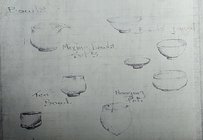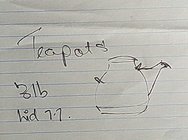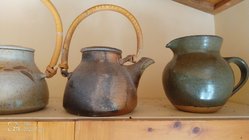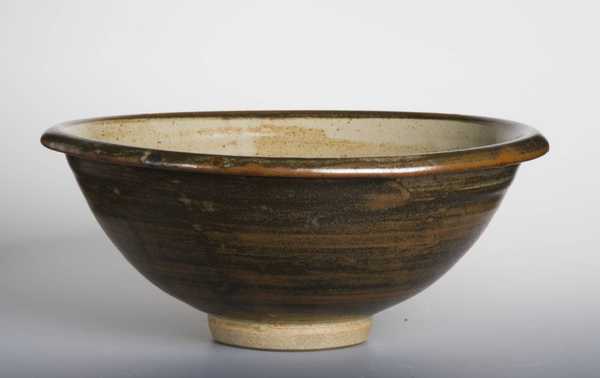I've been following this "seeing" the curve thread and finding it most interesting. I would have probably made a contribution to it earlier, but then it got caught up with all of that CNC related discussion. That seems to have quietened down a bit and maybe now is a good time for me to chime in…
BTW, I consulted my CNC machine and 3D printer, but they had nothing to say for themselves and therefore I have nothing to say on their behalf on that aspect of the topic.
For my own part, my approach to curve and form is probably best summed up by the following statement that I put on the individualised ticket that goes with every piece to the gallery...
Beautiful pieces of wood that guide me
in what form they might take in their
new life beyond the living tree
You can probably see that I have been influenced by George Nakashima and his book,
The Soul of a Tree.
For me it's more like a dialogue between myself and the wood than me imposing a form on a piece of wood. I spend a lot of time looking at a log before I start to cut it up and then with each resulting blank before putting it on the bandsaw/lathe. I may have an initial idea where the piece is taking me, but that usually changes as the turning and the dialogue with the piece of wood progresses.
I enjoy the process and hope the wood and the recipients of my pieces do likewise. I attempt to make my pieces more of a celebration of the inner life of the tree than any demonstration of my technical prowess or design skills.
I do search for the form that works best within each piece of wood, however, I have also acquired a large repertoire of forms that work well in themselves that I have acquired from countless hours of drawing from nature and studying what works well in other craft forms. Recognising a form that works well as it emerges from the blank often comes out of that repertoire of forms that I have internalised. I don't set out to impose that form on the piece of wood, but recognise it, like an old friend, when I find it.
Having also been a potter, I have been influenced by potters like Bernard Leach and Shoji Hamada, so it is probably not surprising that some of my turned pieces in wood reflect that same aesthetic. But, unlike wood, clay has no life in itself and the potter has to bring a form to life in an otherwise inanimate material. The forms that pots take come from the mind and muscle memory of the potter. The apprenticeship is long and there are no shortcuts to mastering the craft.
Here is a beautifully proportioned fruit bowl by Leach held in the Tate Gallery collection…
‘Fruit Bowl‘, Bernard Leach, 1950

www.tate.org.uk
Several things to note about it. The first is that the foot breaks the 1/3 ratio rule, yet is perfectly proportioned. The second is the 1950 date. This pre-dates the beginning of the craft movement in woodturning and woodturners like Bob Stockdale by about a decade. If you want to develop your skills with ‘seeing the curve’ the work of the 20thC craft potters is one very good reference point.
I know from talking with Richard Raffan that his bowl designs were influenced by the potters down in Devon, near to where he first worked, including those associated with the Leach Pottery there.
On the 1/3 foot to rim ratio and other such maxims, such proportions are a good starting point, but only a starting point. There are ratios and forms beyond the maxims that also work. You have to look for them in nature and in each piece of wood that you work with.
Back when I was a potter I worked out my designs on paper for each of my ware ranges... because a lump of clay on the wheel has little to say for itself!
Just dug up some of those designs... done over 50yrs ago...
Apologies for the quality of this image, but that was what you got with photocopying way back when


And, a teapot thrown to that design...

That design for a teapot worked quite well (at least according to my lecturers back then at art school), but if you turned it upside down and thought about the shape as a bowl you could say the foot is too wide and doesn't comply with the 1/3 maxim... ;~}
Start with such maxims but don't get hung up on them.





